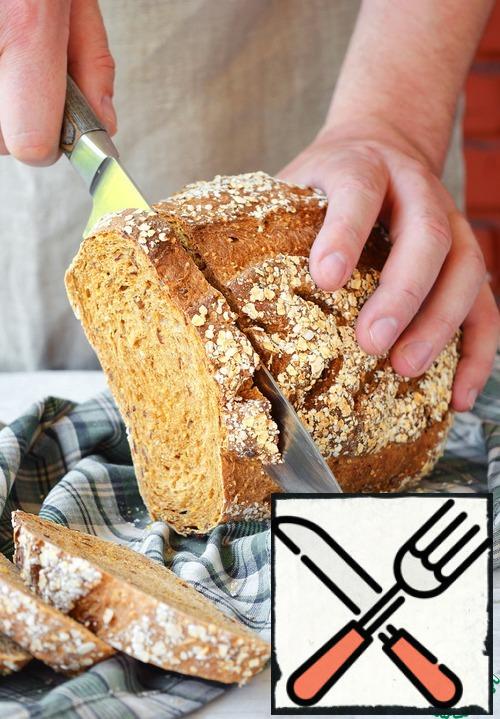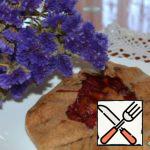This bread in Scotland used to be baked on the eve of the feast of St. Michael, on September 29, when all the grain was removed. Bread was traditionally baked by the eldest daughter in the family from the grains of the fresh harvest. A mixture of different grains was used for "Struan": rye, oats, barley, wheat. The grains were pre-ground and soaked in water or milk. Then they baked bread, and in the morning they carried it to the church to receive the blessing of the priest, who asked St. Michael for a plentiful harvest.
| Cook Time | 60 minutes |
| Servings |
Ingredients
Grain lobe:
- 3 tablespoons Oat flakes
- 2 tablespoons Corn groats
- 2 tablespoons Bran wheat
- 1/4 glass Water
Basic dough:
- 3 tablespoons Flour wheat / Flour
- 1.5 teaspoon Salt
- 1 teaspoon Dry yeast
- 3/4 glass Water
- 3 tablespoons Molasses cane molasses, which can be replaced with dark honey or brown cane sugar
- 1/2 glass Yogurt or buttermilk, kefir
- 3 tablespoons brown rice pre-cooked
Additionally:
- 1 glass Flour wheat / Flour for kneading the dough
- 1 glass Oat flakes for cutting loaves
Ingredients
Grain lobe:
Basic dough:
Additionally:
|
Instructions
- Knead the dough using a mixer with a hook or fork attachment. It will turn out quite sticky initially. You do not need to knead the dough thoroughly, just combine all the ingredients. Cover the bowl with a film and leave it in the room for 1 hour, so that the yeast begins to work and the dough rises slightly.
- If desired, make incisions with a knife or blade before baking.Bake at a temperature of 160-180°With about 40 minutes. The readiness of the bread is determined by the knock: You need to tap on the crust, if it makes a dull sound, then the bread is ready.The recipe for this bread I met in the book by Peter Reinhart "The baker's Apprentice". There it is called "Extraordinary multi-grain bread". And on the Internet I met this recipe with a description of the history of the origin of bread under the name "Struan". I made some changes in the technology in the recipe. Namely: instead of cane sugar, I used molasses, which made my bread darker. And more: Peter Reinhart's recipe for this amount of flour suggests putting 1.5 tbsp. l. of dry yeast and the fermentation time of the dough is only 1.5 hours, and then 1.5 hours of proofing the loaves. I do not like fast fermentation, so I allowed myself to reduce the amount of yeast by 4 times and increased the fermentation time of the dough according to the classic bread technology. Such a mature dough has a bread taste. And I don't think that the girls in Old Scotland used fast yeast, where can they come from there. Previously, bread dough always fermented for a long time. So let's keep the traditions.
- In general, the composition of Struan is not constant. As I have already written, absolutely different grains were added to the dough, which was grown. As for boiled brown rice, as Peter Reinhart himself writes: "This recipe uses such a small amount of boiled rice that it is hardly worth cooking it only for bread (unless you are preparing a larger batch of bread than this version). I suggest cooking brown rice for meals and saving some for special purposes, such as this bread. ". From which I conclude that it can be replaced with any other cereals or flakes. As for the shape of bread, it can be either hearth or baked in molds. In some recipes, I met the advice to lubricate the bread with a mixture of egg and milk before baking, but I did not do this. In addition to flakes, poppy seeds or cumin are also used as a sprinkling. In general, the experiment was interesting, the bread turns out with a very rich taste and aroma.

























